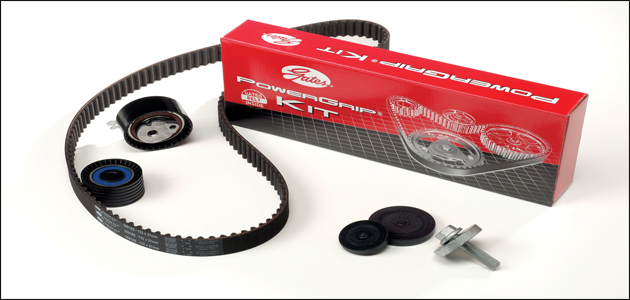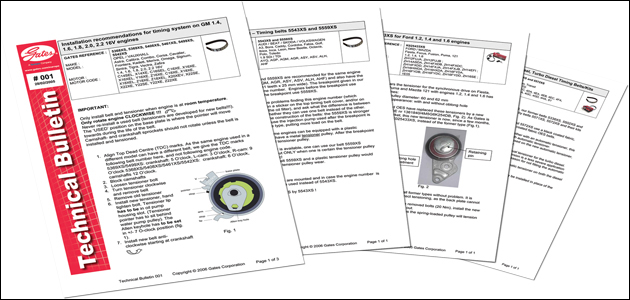
The jobcard says it’s time for a scheduled timing belt change on the Synchronous Belt Drive System (SBDS) of a Peugeot 206 2.0 Litre HDi. Experience tells you that to replace the belt alone is not enough. Preventive maintenance techniques and good workshop practice dictates that the job requires a belt kit, rather than just a belt.

After a quick check of the manufacturer’s recommended procedure, you are ready to proceed. There are two common scenarios:
Scenario 1
No pre-installation checks
The belt kit is supplied with instructions and the job is similar to other installations on similar models. The installation takes place with no unforeseen issues until the engine is wound over in accordance with the recommended procedure. It is at this point that you notice that the belt is running ‘off the pulley’. It looks like ‘a belt problem’. Another belt is selected, the same procedure followed, but the result is the same. The belt is running ‘off the pulley’. They are obviously from a bad batch and as a considerable amount of time has already been wasted, it’s time to call the motor factor and make your complaint.
Scenario 2
Checking for ‘known issues’
The belt kit is supplied with instructions and the job is similar to other installations on similar models. Before the procedure takes place, you decide to play it safe and check to see if the supplier has identified any ‘known issues’. However, this is a Gates belt so there is no need to call the motor factor. Fitting instructions are included inside Gates belt kit boxes. In addition, the numbers of any Technical Bulletins (TB) that relate to known issues associated with the particular application are included. From this it is possible to see that TB No.045 is relevant. On the Gates website (www.gates.com/technical) you can benefit from the experiences of other mechanics who may have encountered an installation issue or two, when installing any of the belts from the range. There is no need to log in or register.
Towards the end of a long list of technical bulletins, you see TB.045. The PDF is entitled ‘PSA diesel’. After downloading, “Tensioner/kit installation on PSA diesel engines” explains clearly that there are potential issues when installing the tensioner included in the kit.
Indeed, there is one very common installation error that must be avoided, or else premature belt failure is inevitable.
Gates has identified several instances where the tensioner pulley has been incorrectly positioned over the mounting stud. TB N o .45 states:
“If the inside of the tensioner front plate rests against the front edge of the mounting stud, the result will be that the tensioner pulley is not sitting square over the stud, EVEN after the fixing bolt has been correctly torqued. This will lead to belt misalignment.”
In short, the belt will appear to be running ‘off the pulley’. This is a misalignment issue. You take the appropriate action to avoid the issue and the job is completed without any problems.

Preparation makes perfect
Good preparation plus the correct equipment and parts will ensure the job is completed in the shortest possible time to the greatest effect.
Consider the manufacturing issues. Gates is one of the world’s largest manufacturers of belts and tensioners. Given the number of quality checks made during the various construction stages, manufacturing errors are extremely rare and bad batches of manufactured timing belts are unprecedented.
Consider the installation issues. Time costs money at every level and there is no doubt which of the two scenarios:
a) Would’ve taken the most time;
b) Would’ve have caused the customer the greatest amount of inconvenience and might have cost the garage a significant amount of rectification time.
Unnecessary errors
It is good workshop practice to replace the belt and tensioners at the same time as the belt at a scheduled change. In over 90% of cases, belt kits are installed as part of a standard drive system service. Installation errors like the one highlighted in TB.45 are repeated up and down the country every day.
These errors are unnecessary. They can easily be eradicated with a preliminary check with the technical information available through your supplier. If necessary, ask the motor factor if the belt supplier is aware of any known issues with a particular belt installation.
One final issue remains…
By now, the water pump will have done the same amount of work as the belt and tensioners, while the cost of the labour has been covered by installing the belt kit. Gates says it’s a risk not to replace the water pump when the kit is installed and even supplies belt kits with the correct water pump included.









